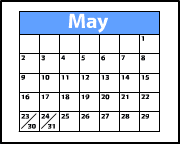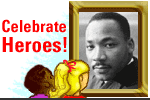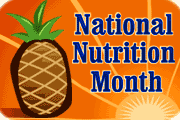A group of students at Ralston Middle School in Belmont, California, literally turned lemons into lemonade. The students, who are members of Ralston’s student government, sold lemonade to raise money for Alex's Lemonade Stand, an organization that supports children afflicted by cancer. [see video above]
At Garnet Valley Elementary School in Glen Mills, Pennsylvania, students ran an Alex’s Lemonade Stand event. They sold more than 1,000 cups of lemonade and raised $370. [read more]
One day last October, third-graders at Prairie Ridge Elementary School in Shawnee, Kansas, sold lemonade and cookies for 50 cents apiece. Their lunchtime effort ended up raising $1,303 for Alex’s Lemonade Foundation. The event helped students learn about childhood cancer, empathy, and how they each have the power to make a difference by overcoming obstacles they face in life, said teacher Brandi Leggett. [read more]
Last fall, members of the Key Club at Summer Creek High School in Houston hosted a lemonade stand at a local Chick-fil-A restaurant. They were so excited with the results that they set up another stand a couple weeks later at a Friday night football game. [read more]
Kathy Andrade’s second-graders at Our Lady of the Assumption/Holy Family School in Fairfield, Connecticut, have set up lemonade stands since 2008 to support the efforts of Alex’s Lemonade Stand Foundation. The monthly lemonade functions raised more than $2,000 last year. [read more]
ALEX HAD A PLAN
 Those are just a handful of hundreds of stories of schoolkids who have followed in the footsteps of a young girl named Alexandra (“Alex”) Scott.
Those are just a handful of hundreds of stories of schoolkids who have followed in the footsteps of a young girl named Alexandra (“Alex”) Scott. When Alex was just four years old, she told her parents she wanted to set up a front-yard lemonade stand. Her plan: to give the money to doctors to help them find a cure for the cancer she had lived with since she was a year old. Her first “Alex’s Lemonade Stand” raised an astonishing $2,000 in one day. While bravely fighting her own cancer, Alex continued to set up lemonade stands every year. As news spread, people everywhere were inspired to start their own lemonade stands -- donating the proceeds to her cause. By the time Alex passed away at the age of eight, her stand and inspiration had raised more than $1 million towards finding a cure for the disease that took her life.
Alex's legacy lives on in Alex’s Lemonade Stand Foundation, established by her parents in 2005. Since its inception, the Foundation has raised more than $40 million to fund more than 150 cutting-edge research projects; create a travel program to help support families of children receiving treatment; and develop resources to help people everywhere affected by childhood cancer.
NEW SERVICE-LEARNING RESOURCES FOR SCHOOLS
At Alex’s Lemonade Stand Foundation, staff members know that young people can make a big difference. They saw it in Alex, and they continue to see it everyday as children hold fundraisers to keep Alex's dream of a cure alive. To support teachers and students, the Foundation team has created many resources to help teach important lessons about giving and to empower students to act.
“We want your school's experience to be rewarding for students, staff, and the entire community,” says the Foundation’s Connie Funston, “so we are proud to introduce our exciting new service-learning program, which aims to teach Alex’s inspiring message of making a difference, helping others, and overcoming obstacles.”
 The curriculum comprises three units each for Grades K-1, 2-3, and 4-5 and was developed with emphasis on enhancing the literacy skills of children while teaching them about the “Power of One.” It is also geared towards reinforcing key lessons from the Foundation’s children’s book, Alex & the Amazing Lemonade Stand. Lesson plans include supplemental handouts as well as special instructions for English-as-a-second-language learners, struggling learners, and gift-and-talented students. For teachers new to service-learning, materials explaining this method of teaching are also included.
The curriculum comprises three units each for Grades K-1, 2-3, and 4-5 and was developed with emphasis on enhancing the literacy skills of children while teaching them about the “Power of One.” It is also geared towards reinforcing key lessons from the Foundation’s children’s book, Alex & the Amazing Lemonade Stand. Lesson plans include supplemental handouts as well as special instructions for English-as-a-second-language learners, struggling learners, and gift-and-talented students. For teachers new to service-learning, materials explaining this method of teaching are also included. Funston encourages anyone interested in creating an Alex's Lemonade Stand fundraising event in their school community to spend some time checking out these resources the site has to offer:
Lemonade from Lemons Service-Learning Program
Hold a Stand at Your School (and Other Fundraising Ideas)
Lesson Plans for Teachers
Schools & Service-Learning: Downloads
Request a Copy of the Book: Alex and the Amazing Lemonade Stand
Discussion Points
Getting Involved: Ways to Fundraise
Get Your School Involved: Register Now
You can help kids with your own lemonade stand.
As Alex once said,
“It’s easy and it’s fun.”
You need lemonade, ice, and a little bit of sun.
The money you raise can help kids who are sick.
A cure might be found, perhaps even quick!

























